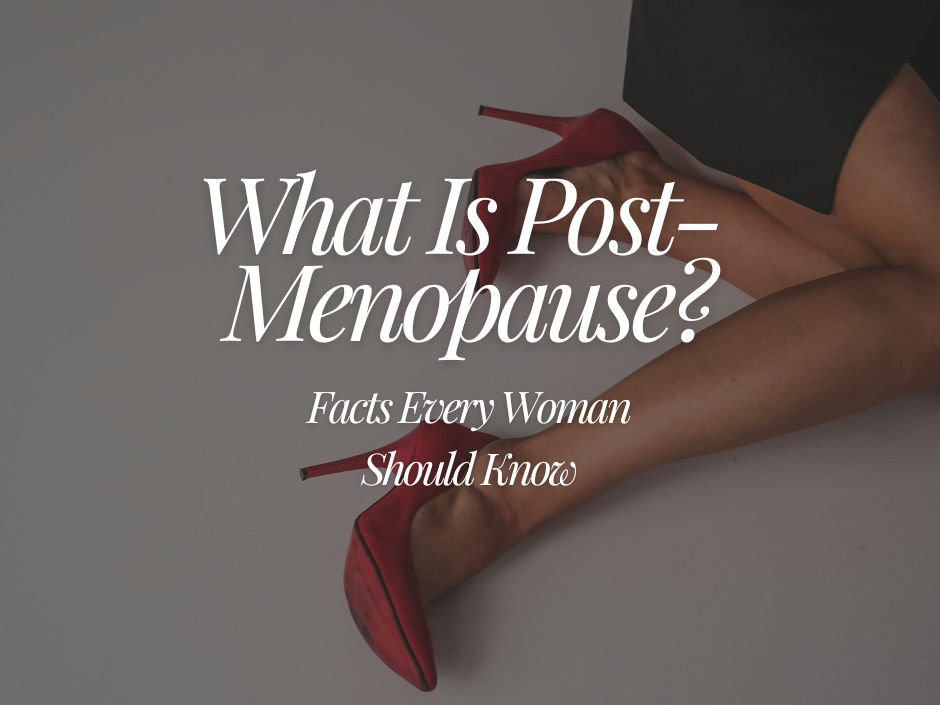What Is Post-Menopause — And Why It’s Not the End of the Story
- Victoria Harris
- Jul 25
- 4 min read

Most conversations about menopause stop at the moment your periods end. But what happens after that? What happens post-menopause?
For many women, post-menopause feels like a strange, invisible zone: your periods have stopped, the hot flushes might be less intense, but something still feels… off. You’re not who you used to be. You’re tired, your body has changed, and no one seems to talk about what comes next.
But this next phase — post-menopause — matters just as much as the years that came before.
It’s a time of enormous biological change. It comes with risks that are often overlooked. But it also brings powerful opportunities to take control of your health, strengthen your body, and feel grounded again.
Let’s unpack exactly what post-menopause is, how it affects your body, and what you can do to thrive in this new chapter of life.
🌙 What Does "Post-Menopause" Actually Mean?
Post-menopause begins the day after you’ve gone 12 consecutive months without a period.
That’s when your body officially stops menstruating — and your ovaries have essentially ceased estrogen and progesterone production.
For many women, this occurs between the ages of 45 and 55. But the transition to this stage is different for everyone. Some women glide in with few symptoms. Others are dragged through a minefield of hot flushes, mood swings, insomnia, and body changes — and wonder why the symptoms haven’t gone away.
Here’s what matters: post-menopause is not a return to balance. Your hormones don’t “settle” into a neutral state — they settle into a deficient state. That’s what creates the conditions for longer-term health risks, especially when they go unsupported.
🧬 The Lasting Impact of Low Estrogen
Estrogen does much more than regulate periods. It supports nearly every system in your body — from bones and blood vessels to your brain and metabolism.
So when your estrogen drops and stays low (as it does in post-menopause), the ripple effects can be wide-reaching and long-lasting.
Let’s look at some of the major changes to expect — and what you can do about them:
❤️ 1. Cardiovascular Health
Before menopause, women have a lower risk of heart disease than men. That’s largely due to estrogen’s protective effects on blood vessels, cholesterol metabolism, and blood pressure regulation.
After menopause, post-menopause, that protection disappears — and the risk of cardiovascular disease skyrockets (PMID: 19536123).
Key changes:
Higher LDL (“bad”) cholesterol
Increased blood pressure
Reduced artery flexibility
More systemic inflammation
What you can do:
Prioritise aerobic fitness, strength training, omega-3s, magnesium, sleep, and blood sugar balance. These are the frontline tools for protecting your heart.
🦴 2. Bone Density and Fracture Risk
Estrogen slows the rate at which your bones break down and rebuild. After menopause, bone loss accelerates, particularly in the hips, spine, and wrists (PMID: 15883635).
Women can lose up to 20% of their bone density within 5–7 years after menopause. This increases the risk of osteopenia, osteoporosis, and fractures — especially in the event of a fall.
What you can do:
Strength train 2–4x per week
Get regular load-bearing movement
Maintain vitamin D, calcium, magnesium, and protein intake
Use collagen and resistance-based rehab to improve bone strength
🧠 3. Cognitive Health and Brain Fog
Many women continue to experience brain fog, memory lapses, or anxiety after their periods stop. Why? Because estrogen helps regulate neurotransmitters like serotonin, dopamine, and acetylcholine — all critical for memory, mood, and cognition.
What you can do:
Stabilise blood sugar to reduce inflammation
Prioritise restorative sleep and circadian rhythm alignment
Train your brain through novelty, learning, and movement
Support gut health and detoxification pathways
🧬 4. Metabolic Shifts: Fat Gain, Muscle Loss, and Insulin Resistance
Post-menopause often brings visible changes in body composition — especially more abdominal fat and less lean muscle mass. This isn’t about willpower — it’s a direct effect of low estrogen and aging muscle tissue (PMID: 28451654).
The result? Increased risk of:
Type 2 diabetes
Metabolic syndrome
Visceral fat accumulation
Chronic fatigue
What you can do:
Build muscle through progressive resistance training
Follow a protein-rich, anti-inflammatory diet
Stay consistent with movement, hydration, and stress management
Consider lab testing to assess insulin, cortisol, and thyroid markers
🚻 5. Urogenital Symptoms: UTIs, Dryness, and Incontinence
Without estrogen, the tissues of your vagina, bladder, and urethra become thinner, drier, and more fragile.
That leads to:
Increased urinary tract infections
Mild incontinence or urgency
Pain during intimacy
Vaginal dryness or burning
These issues are extremely common — and they’re not just something to put up with.
What you can do:
Incorporate pelvic floor training and mobility work
Stay hydrated and avoid bladder irritants (like caffeine and sugar)
Talk to your GP about topical vaginal estrogen (not systemic)
🌿 Post-Menopause Can Be Your Prime — If You’re Supported
Post-menopause isn’t a decline. It’s a transition. And with the right strategies in place, this can be your strongest, clearest, most energised chapter yet.
What we recommend at Thur Menopause:
✅ Functional, personalised nutrition
✅ Regular resistance training (minimum 2x/week)
✅ Blood sugar regulation and anti-inflammatory focus
✅ Pelvic floor and core strength
✅ Nervous system support (think: breathwork)
✅ Targeted supplementation based on labs and genetics
🎯 Not Sure What Phase You’re In?
It’s common to feel confused — especially if your periods are irregular, your symptoms are vague, or you’re still on contraception. That’s exactly why I created the Free Phase Quiz.
It only takes a few minutes — and it’s the first step to getting real answers.



